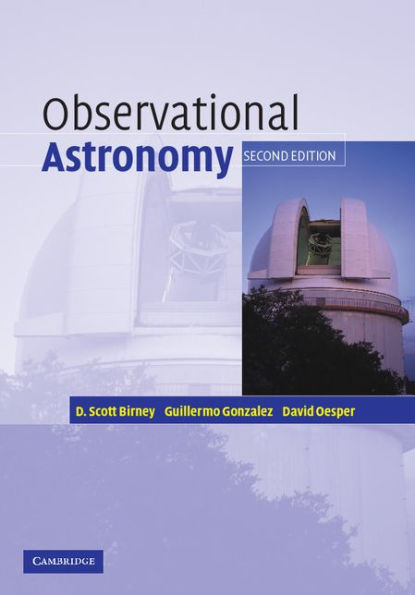Observational Astronomy
The long-awaited second edition of this well-received textbook gives a thorough introduction to observational astronomy. Starting with the basics of positional astronomy and systems of time, it continues with charts and catalogs covering both historically important publications and modern electronic databases. The book builds on a fundamental discussion of the basics of light and the effects of the atmosphere on astronomical observations. Chapters include discussions of optical telescopes, detectors, photometry, variable stars, astrometry, spectroscopy, and solar observations. This edition contains new discussions of measurements with CCDs and appendices give basic statistical methods, useful astronomical software and websites, and sources of accurate time-calibration signals. Observational Astronomy is the perfect textbook for upper level undergraduate or beginning graduate courses on astronomy. Examples based on real astronomical data are placed throughout the text. Each of the well-illustrated chapters is supported by a set of graduated problems and suggestions for further reading.
1100946822
Observational Astronomy
The long-awaited second edition of this well-received textbook gives a thorough introduction to observational astronomy. Starting with the basics of positional astronomy and systems of time, it continues with charts and catalogs covering both historically important publications and modern electronic databases. The book builds on a fundamental discussion of the basics of light and the effects of the atmosphere on astronomical observations. Chapters include discussions of optical telescopes, detectors, photometry, variable stars, astrometry, spectroscopy, and solar observations. This edition contains new discussions of measurements with CCDs and appendices give basic statistical methods, useful astronomical software and websites, and sources of accurate time-calibration signals. Observational Astronomy is the perfect textbook for upper level undergraduate or beginning graduate courses on astronomy. Examples based on real astronomical data are placed throughout the text. Each of the well-illustrated chapters is supported by a set of graduated problems and suggestions for further reading.
40.99
In Stock
5
1

Observational Astronomy

Observational Astronomy
40.99
In Stock

Product Details
| ISBN-13: | 9781316142110 |
|---|---|
| Publisher: | Cambridge University Press |
| Publication date: | 06/29/2006 |
| Sold by: | Barnes & Noble |
| Format: | eBook |
| File size: | 31 MB |
| Note: | This product may take a few minutes to download. |
From the B&N Reads Blog
